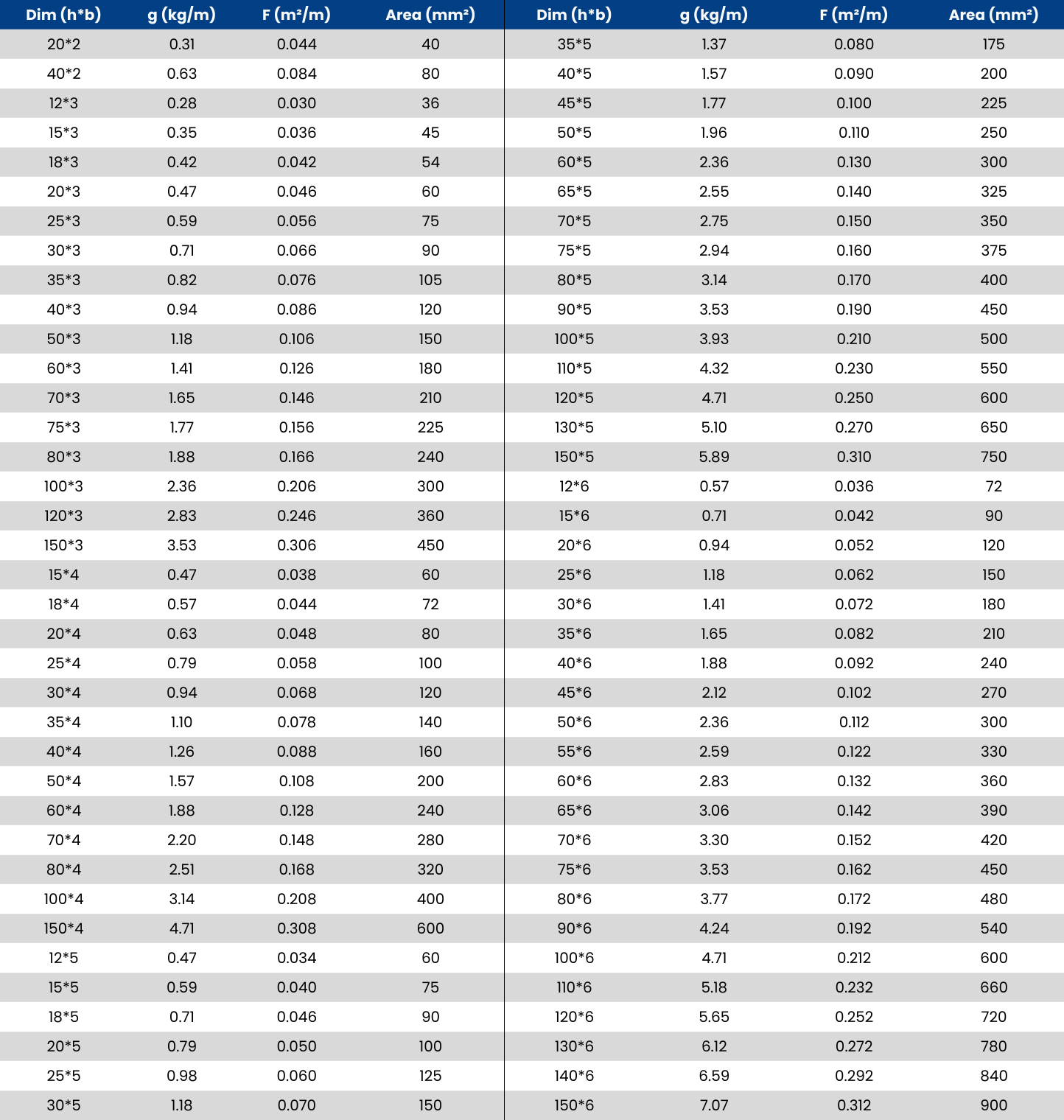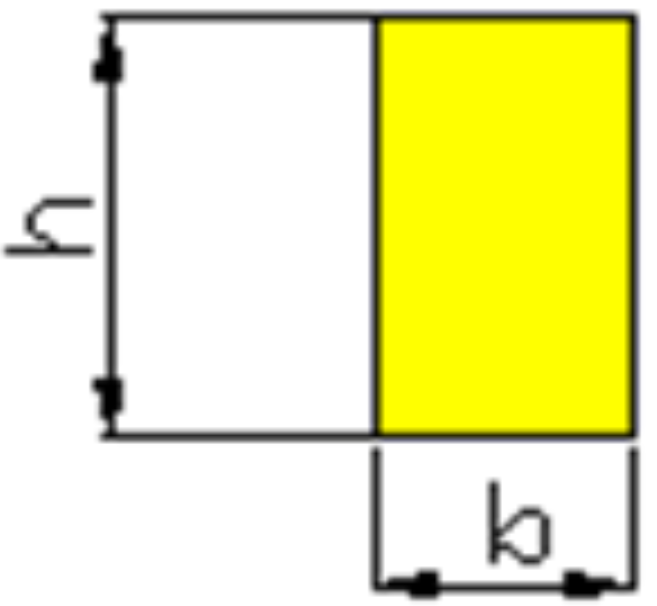The structure and geometry of the flat bar make it well suited as a component for construction, assembly, and reinforcement of various structures. Its even and flat surface enables easy attachment and creates stability in joints and assemblies.
Flat bars are usually made of different materials such as steel, aluminum, or stainless steel. The dimensions of the flat bar can vary depending on the application area and the requirements of the project.
In the construction industry, flat bars are often used to create frames, reinforce structures, manufacture scaffolds, and hold together various components. In addition, it is used in the manufacturing sector to create machine parts, transportation equipment, and interior details.



